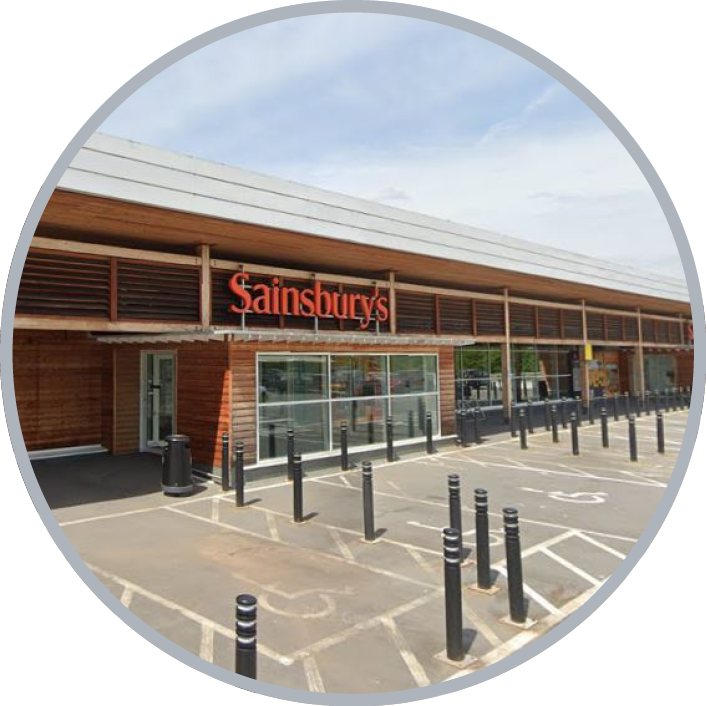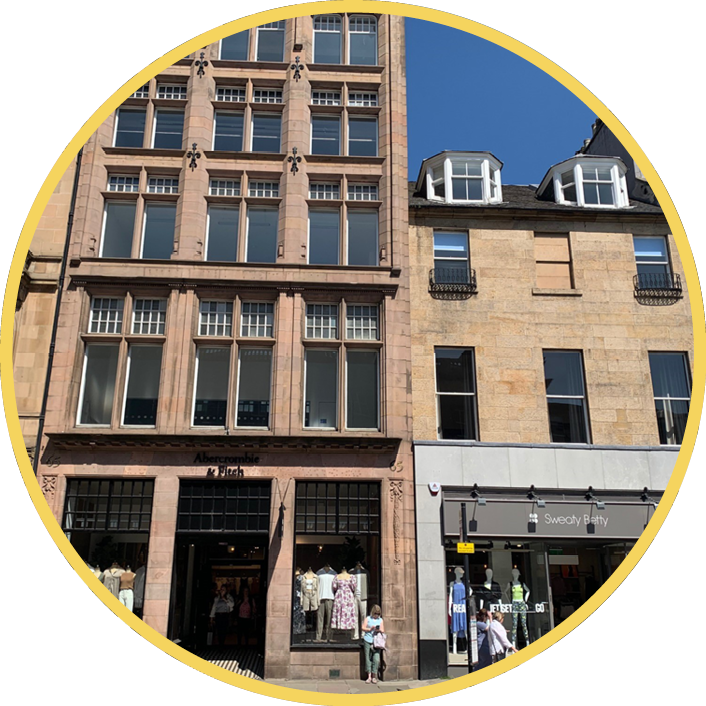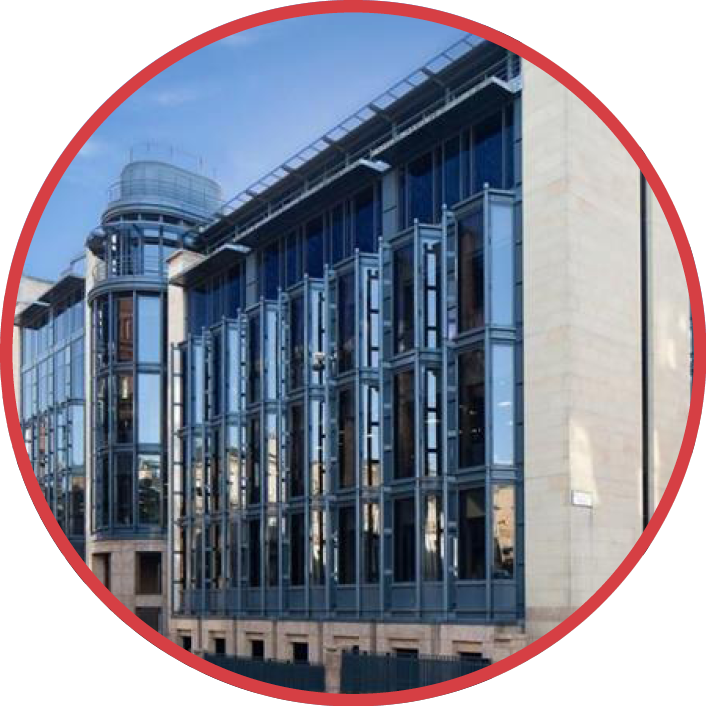
With Wimbledon upon us, Andy Murray is back and in good form! Two recent tournament victories and he is looking competitive once again – how has he achieved it?
Asked in a recent interview about one of his victories he replied, “Once I got back into the second set, I gained confidence (which is something that I haven’t had in a while), that was what turned the match for me”.
A bit like Andy, it feels like our market has been through an equally tough time and is now seeking some rather better news to create that elusive feeling of confidence and help to restore some real momentum. There are some early signs that things are improving – stock on the market has increased significantly since Q1 and sellers are now more aligned with buyers in terms of pricing aspirations. One sector which has been through a particularly difficult time in recent years is the high street retail market. On-line retailing, Brexit, Covid and cost inflation have all contributed to a difficult backdrop but despite these headwinds, prime physical retail has remained relevant, and in some cases, rents are starting to grow (from modest bases).
So, in addition to our usual quarterly market analysis, our focus in this review will be on high street retail – have rents re-based sufficiently, is pricing attractive enough to tempt investors and what are some of the challenges still facing the sector. To help us shape our thinking, we are pleased to share a Q&A piece with Gidon Amar, Investment Director at Broadland Properties, who have been one of the most recent active high street investors in Scotland.
With a confident Andy Murray, could we see a “three-time” Wimbledon Champion – let’s hope so…!
Market Overview.
Key Themes
Allez les bleus – the “Auld Alliance” is alive and well with a flurry of French based investors active or becoming active in Scotland. BauMont Capital, La Francaise, Corum and Remake all showing appetite for opportunities in Glasgow and Edinburgh.
New debt entrants – as traditional high street banks tighten their lending criteria, new sources of debt are appearing. In addition to the Institutions already in this space, Private equity houses are now able to hit their demanding return levels via debt rather than direct investing, which has galvanised the likes of M7 Real Estate to become active in the Scottish market.
Develop or sell – a number of interesting city centre office development opportunities owned by income funds have come to the market as owners grapple with challenging appraisals and have chosen to sell rather than take the development risk. Where there are alternative use options (hotel/residential), interest has been strong and likely to produce stronger residual values than the proposed office development.
Some signs of encouraged selling – with the cost of debt continuing to stay stubbornly high and lenders squeezing terms, some pressure is starting to come on borrowers. Particularly so on new product where development finance is in place and letting campaigns have been slower than expected.
Glasgow offices – starting to find some traction. After a dearth of transactions over the last 24 months (barring 177 Bothwell Street), there are more positive signs of improved activity with c£75m trading in the last quarter and a further c£250m available either quietly or openly on the market.
Transaction Volumes
- Q2 saw £396m traded down 35% on Q2 2022. A quieter quarter was to be expected despite the macro headwinds a number of notable deals were completed.
- Encouragingly, Q2 volumes were 6% above the 5 year average.
- A number of significant opportunities are being prepared for sale post summer and while challenges remain, we are anticipating a stronger deal flow during the second half of the year.
No Data Found
Pricing
- After a relatively quiet Q1, the continuing macro-economic challenges (high inflation and further rise in cost of debt) have unsettled some investors. Despite the significant value write-downs in Q4 2022, there remains something of a stand-off between sellers and buyers, with an anticipation that there may be further adjustments to come. However, this is not uniform across the sectors, with some faring better than others.
- Logistics remains on most active buyers target lists and with the demand/supply dynamics robust, demand for quality product is holding up. Prime yields in the best locations (eg: Eurocentral and the M74/M73/A725 triangle) have settled at c5.5-5.75%.
- The buyer pool for offices is less deep but again there are variances. For prime product, there is a market in the 5.5-6% range for the very best. Outside of this, sentiment remains challenging, and values reflect this, with good secondary needing to be 7.5%+ and tertiary moving out from there.
- Prime retail parks are attracting interest from a number of Funds in addition to the most prevalent buyers (eg: Realty Income) which is helping to keep pricing stable. The best parks are seeing pricing in the mid 6%’s, with good secondary moving out to 7%+. High Street continues to have a fairly shallow buyer pool and for the best opportunities, yields of 6.5% are being seen.
- While the weight of money continues in the Living Sector, it is not totally immune to the wider challenges, particularly when development funding is involved. Yields are remining stable 4.5% in the BtR sector and c5.5% for the best PBSA opportunities.
Investor Activity
- Fund activity remains selective and quite opportunistic. Focused primarily on the living and logistics sectors but, more recently, retail warehousing is back on the radar of a number of fund buyers. Long income buyers are probably most affected by the volatile financial markets and their activity has been limited to one-off transactions, food stores being one sector where yields have moved sufficiently to meet their return criteria.
- Core-plus remains an interesting area for the well-financed/cash buyers. Quality assets with WAULTs of 5-10 years but with very strong fundamentals are seeing good levels of interest, particularly from overseas investors. With yields of 6.5-7.5% on offer, return criteria can be hit but stock selection is paramount.
- With some more encouraged selling being seen, the opportunistic buyers are girding their loins but it doesn’t feel like there is real distress yet with lenders still trying to work with borrowers and extend facilities rather than call them in. For now, patience is a virtue…
Key Recent Transactions.
Q2 saw some interesting themes and significant transactions which we have highlighted below:

Fife Central Retail Park, Kirkcaldy
“Dominant retail park snapped up“
Vendor: Capreon
Purchaser: US Investor
Let to: Multi-let
Price/Yield: £90m / 7.00%
Date: May 2023

Sainsbury’s, Darnley Mains Road, Glasgow
“RPI linked long income supermarket trades“
Vendor: L&G Investment Management
Purchaser: Federated Hermes
Let to: Sainsburys
Price/Yield: c£48m / 5.75%
Date: June 2023

63-65 George Street, Edinburgh
“Investor adds prime mixed use Edinburgh asset to a growing portfolio“
Vendor: Patrizia
Purchaser: Broadland Properties
Let to: Abercrombie & Fitch, Sweaty Betty, No Logo, Ventus Resources
Price/Yield: £6.775m / 7.20%
Date: May 2023

191 West George Street, Glasgow
“Prime office attracts French investor“
Vendor: NFU Mutual
Purchaser: Corum
Let to: Multi-let
Price/Yield: £36.2m / 6.40%
Date: June 2023
The investor view on the high street retail sector:
With rents rebasing to more affordable levels and healthy occupier demand in certain prime locations, would you consider investing in high street retail?
No Data Found
- 56% of respondents would consider investing in high street retail, with a number commenting on anticipated rental growth as a key reason for investing in the sector.
- There is considerably more positive sentiment from property companies with 77% of respondents willing to consider the sector whereas 83% of fund respondents would not.
- At a time when funds are noticeably reducing high street retail weightings, 2023 may be an opportunity for property companies to pick up retail assets in the truly prime locations, where rebased rents and robust occupational demand offers genuine rental growth prospects.
Over the next 12 months, do you believe prime high street yields are likely to harden, soften or remain stable?
No Data Found
- Almost two thirds of respondents expect prime yields to remain stable, with only 12% expecting yields to harden. With retail hit hard during Covid, a number of respondents believe yields have ‘bottomed’ out, caveated by the likelihood of further pain in secondary locations.
- Physical retail has illustrated a great deal of resilience over the last 24 months, with the rebound in the sector stronger and faster than many expected. Buyer pools remain relatively thin, however there has been a noticeable uptick in those looking for opportunities.
- With many retailers heavily geared it seems unlikely there won’t be further casualties over the coming months with purchasers likely to price in uncertainty, leading to a continuing disconnect between buyer and seller and restricted transactional activity.
What do you believe is the greatest challenge facing the prime high street retail sector?
No Data Found
- The majority of respondents (79%) expect consumer confidence on the back of the cost of living crisis to pose the greatest challenge to the sector. It is often said the UK is a consumer based economy, but with inflation stubbornly high and interest rates continuing to tick upwards, retailers are sure to feel result of a squeeze on disposable incomes in the coming months.
- Not many industries have been hit as hard as physical retail over the last few years; the GFC; the rise of out of town shopping; ecommerce; and COVID have put retailers through the ringer and many have emerged as more nimble and savvy businesses who may well pause expansion in the face of uncertain economic times.
- Only 3% of respondents selected stronger demand for out of town shopping as one of the greatest challenges facing the sector. Over the last couple of years, High Streets have proven their worth in bringing life back to town centres.
“Expert view” on the high street retail market…

Gidon Amar
Investment Director
Broadland Properties
Over the previous couple of years, you have been actively acquiring prime retail led assets, notably in Edinburgh. What has driven the investment rationale for targeting the sector?
We have indeed! High street retail has been through a very turbulent time which notably came to a head during the pandemic. We remained strong believers in the importance of high street retail which itself is an emotive asset class, but all appeared to have been tarred with the same brush. Our instinct was that, despite the headwinds, occupiers would once again become active and take the opportunity to secure the best pitch in the best locations at reduced rents and occupational costs. Our investment strategy has mirrored that.
As a company we have always had a strong affiliation with Edinburgh, especially George Street. For us, there is no better micro location to act on what we believe in. Taking a step back and looking at the street as a whole, it has changed (for the better) considerably over the last 24 months. The quality of occupiers has improved markedly, no doubt helped by the elevation of the city’s retail since the opening of the St James Quarter. We hope plans to pedestrianise George Street in 2025 will be followed through as it will improve the shopping environment and can only be positive for footfall and the experience retailers can deliver.
What do you expect to drive capital value growth on High Street assets in the short to medium term?
I believe stock will begin to become more limited on certain prime high street locations. This should lead to greater occupier competition for space and in turn rental growth from the base levels agreed post-Covid. Under more settled and certain economic times, the same rationale could see an uptick in demand from investors for these buildings and therefore some yield compression. In addition, as previously under-utilised or vacant upper floors are invested in for alternative uses, the global rents achievable for buildings may also increase. All of these factors could provide a platform for future capital value growth.
As a business, have you been targeting particular High Street locations with strong fundamentals or is your approach more opportunity led?
Our investment strategy is generally opportunity led but with focus most recently on prime high streets within the UK’s largest cities, affluent towns and tourist or leisure led destinations. Edinburgh specifically ticks all of these boxes. Focusing on George Street, the prime pitch is established on the north side of the street between Frederick Street and Hanover Street. The vacancy rate on this stretch is effectively 0% and this will have a positive over-spill effect to other strong pitches including 86-92 and 89 George Street which we also recently purchased. Additionally, F&B is thriving. George Street has seen a number of new restaurant/bars taking units, further restricting the retail provision. Strong local economies are key to sustaining occupational demand and in addition to a strong employment market, Edinburgh benefits from a thriving tourism market – the Edinburgh festivals alone provides a very significant boost to footfall and retail spend.
Have the ongoing economic headwinds given you pause for thought or as a longer-term investor is it a case of ensuring the business case for acquisitions is robust regardless of market turmoil?
Of course, we are mindful of the ongoing economic headwinds however, much like the economy, property is cyclical. Therefore, as an asset backed investor, we will always seek properties with the strongest fundamentals in the right locations. We would like to see some stability and clarity return to the wider economy, although realistically this is likely to take some time. The uncertainty in the market should present some interesting opportunities albeit on slightly riskier metrics.
Do you see H2 2023 as a buying opportunity?
Yes! We have invested so far through 2023 and hope to do so for the remainder. As ever, strong fundamentals are key and whilst we are not solely focused on the retail sector, we believe there will continue to be opportunities to acquire assets where rents have been rebased and offer genuine growth. A number of funds are divesting high street retail which should mean there will be some quality stock to focus on. Some of our recent Edinburgh acquisitions comprise retail with upper floor offices where we will be carrying out extensive refurbishment and letting into an undersupplied market with attractive rental growth prospects.
“Our view” on the the outlook for high street retail…

Chris Thornton
Associate
Lismore Real Estate Advisors
Overview.
It’s safe to say that high street retail has been through a period of dramatic change, with the pandemic exacerbating headwinds which the sector had been battling for a number of years, principally the rise of online shopping and a fundamental question as to the role of physical stores in the long-term. Whilst the online giants came into their own during lockdown, driving increased demand for logistics and storage facilities, the future for the high street had never been more uncertain. However, the pain which many retailers experienced has resulted in a stronger, more dynamic high street which has rebounded far quicker than many predicted and is now a far more resilient sector. What does this mean for investors? We believe the combination of future rental growth performance and a yield discount for prime assets in comparison to other sectors, is compelling.
Where is the growth?
With rents rebasing, the prime retail locations of Buchanan Street, Glasgow and George Street, Edinburgh are seeing rental growth driven by a substantial number of ongoing requirements with demand for space contrasting with very low vacancy rates. Whilst turnover only or low base rents with turnover top ups became popular during the pandemic, this trend has swiftly receded to be replaced by base rents at levels well below the historic tone on the streets. On George Street rebased rents are now c£130-£140 psf Zone A, a discount of 25%-30% to the long-term average. This was replicated on Buchanan Street where rates dropped from a peak of £320 psf Zone A to £240 psf.
The bounce back has been even more pronounced in Glasgow than Edinburgh, with several new lettings under offer at £290 psf, an increase of 20% from ‘Covid’ deals. Interestingly, recent Buchanan Street growth has been primarily driven by jewellers, watch brands and beauty (all who received a boost during Covid), with fashion retailers driving demand on George Street. The St James Quarter has proven to be a very positive addition to Edinburgh city centre and rather than a wider detrimental impact, it has only served to attract new shoppers from further afield and new brands to the city, many of which are new to Scotland, with the likes of Abercrombie & Fitch, Me+Em, Aubin & Wills and Astrid & Miyu choosing George Street as a first entry into the Scottish market. Rental growth in the short to medium term in these locations is likely to be the key driver of performance over the coming 12-18 months with potential for some degree of yield compression for the very best assets.
Where are the opportunities?
We have already started to see property companies taking the opportunity to buy into prime high street assets at yields which are c200-250bps softer than the long-term average. Retailers who have agreed new lettings or regeared within the last 18 months are likely to be benefitting from concessionary rents, it is these shops which offer buyers the opportunity to drive returns. With many traditional high street investors exiting the market, it is an opportunity for private investors and property companies to buy truly prime assets. In the Edinburgh market we have seen opportunities to buy mixed use assets with strong ground floor retail units and upper floor offices, offering the opportunity to refurbish and relet into a strong occupational office market. Buildings with ground floor retail and vacant uppers are being targeted by property companies aiming to reposition vacant space for office, leisure and hospitality use.
Pricing and liquidity
With the cost of debt remaining challenging, and not accretive in most prime sectors, it will be cash buyers who remain prevalent as high street buyers. However, they will be particularly selective with their acquisitions hence the number of active buyers will remain comparatively thin.
We anticipate prime yields for the best product remaining stable for the remainder of 2023, with the prospect of potential rental growth in the strongest pitches giving some confidence. The market is likely to remain ‘sticky’ with potential vendors taking a wait and see approach. Secondary locations which lack the same demand and rental growth prospects, are likely to see yields move out further. With valuations lagging behind and little transactional evidence in the light of macro-economic events, buyers are likely to remain cautious unless pricing appears very attractive, with vendors more likely to engage one to one or run targeted campaigns.
Looking towards the second half of 2023
With the challenging economic outlook likely to be here for longer than expected, plus the summer season fast approaching, we are unlikely to see a significant increase in stock coming to the market, hence high street volumes are likely to remain subdued into Quarters 3 and 4.
Whilst the cost-of-living crisis will undoubtedly begin to impact on the bottom line of many retailers, the demand/supply dynamic in the prime pitches is still in reasonable shape, particularly when there is additional demand from F&B operators for city centre representation.
We firmly believe that quality physical retail in the prime pitches off re-based rents, most definitely has a place going forward and for those investing now, it will be a case of fortune favouring the brave…